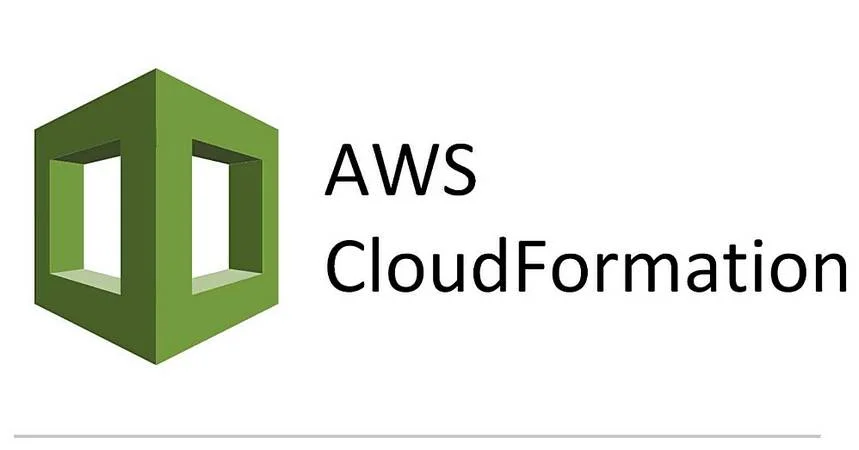According to the study by Emergent Research, the infrastructure as code market size was USD 0.64 Billion in 2021 and is projected to exhibit a CAGR of 24.0% over the forecast time frame. The need for improved efficiency of corporate processes is a key element propelling revenue development in the infrastructure as a code industry. As software systems get more complicated and sophisticated, new technical methods are necessary.
Managing and automating infrastructure deployments with Infrastructure as Code (IaC) is essential in today’s fast-paced digital world. With the help of IaC tools, programmers and IT admins can declaratively create and provide system resources. Terraform, CloudFormation, and Ansible are among the leading rivals in the IaC field.
This blog article provides a comprehensive comparison of three widely used tools so that you can pick the one that works best for you!
Why is There a Need for IaC Tools?
The importance of Infrastructure as Code (IaC) technologies is growing in today’s ever-changing IT environment. Automating and simplifying infrastructure provisioning and administration is impossible without these technologies.
IaC solutions like Terraform, CloudFormation, and Ansible help businesses achieve automation and efficiency by doing away with time-consuming and error-prone manual infrastructure setup processes. Because of IaC technologies’ scalability and adaptability, firms can swiftly adjust to shifting needs and make the most of their available resources. These technologies improve cooperation amongst groups working on the same project through features like version control and code sharing.
With the help of IaC technologies, infrastructure can be easily replicated and backed up in case of a disaster. IaC solutions in the age of cloud computing and multi-cloud deployments offer a unified method of handling infrastructure management across various deployment settings, making it simpler to keep things consistent and reap the benefits of cloud computing.
IaC technologies are crucial in today’s IT operations because they allow businesses to construct, operate, and grow their infrastructure in a dependable, low-cost, and efficient manner.
Terraform vs. CloudFormation vs. Ansible: Comparing Code Tools
Below are the three code tools with detailed descriptions:
Terraform


HashiCorp’s Terraform is an open-source IaC solution that works with AWS, Azure, and Google Cloud Platform, among others, to design and provide infrastructure resources.
Let’s get into Terraform’s powerful features and capabilities:
Declarative Syntax
Using the declarative syntax of HashiCorp’s Configuration Language (HCL), Terraform users can specify their infrastructure’s resources straightforwardly and understandably. By taking this route, teams can ensure that their infrastructure code is more readable and easily maintained.
Suppliers of Resources
Terraform provides a wide selection of resource providers to deploy resources in various cloud services. Compute instances, storage, networking, load balancers, and databases are just some of the many infrastructure services offered by these resource providers. Terraform is well-suited for multi-cloud and hybrid cloud deployments since users can simultaneously provide resources from many cloud providers.
Government Oversight
Terraform keeps track of the resources it administers in a state file. Terraform uses this state file to learn about the current setup and determine what must be changed to go to the target state. Managing large-scale infrastructure deployments is much easier using Terraform’s state management features. State file management in a team setting can be complicated and requires constant communication and versioning.
Sharing of Code for Infrastructure
You can collaborate on your infrastructure as code with Terraform Cloud and Terraform Enterprise. For teams to collaborate on infrastructure code, manage changes, and guarantee consistent deployments across the business, technologies like remote state storage, access restrictions, and versioning are made available.
Community Assistance
New resource providers and modules are developed with the help of Terraform’s active and engaged community. Terraform’s open-source nature encourages creativity, and the platform’s extensive library of community-maintained modules covers all infrastructure needs. Users can more easily solve common issues and learn best practices thanks to the robust documentation and community help.
CloudFormation


Amazon Web Services (AWS) CloudFormation is a native IaC service for handling AWS resources. Let’s have a look at all the great things CloudFormation can do:
Coding the Infrastructure
CloudFormation users can use JSON or YAML templates to describe infrastructure resources. Users can specify resources with their settings, dependencies, and metadata because of the templates’ organized representation of the intended infrastructure state. CloudFormation templates provide for consistent and predictable deployments because of their declarative nature.
Cloud Computing Resources
Cloudformation’s coverage of AWS resources and services is exhaustive since it is a native AWS service. CloudFormation can manage and provision EC2 instances, S3 buckets, RDS databases, Virtual Private Clouds, Identity and Access Management roles, and more on Amazon Web Services. With CloudFormation, you can rest certain that the most recent features and capabilities will be supported along with any AWS service changes.
Stack Management
Stacks are the logical units that CloudFormation uses to arrange groups of infrastructure resources. This stack-based method simplifies administration, revision control, and rollback for infrastructure updates. CloudFormation enables stack updates, which means that users can make changes to the infrastructure and implement them without disrupting active services.
Connection to AWS
Cloud formations’ seamless integration with other AWS services creates a robust ecosystem for managing infrastructure. It works with AWS CloudTrail for change auditing and tracking, AWS Identity and Access Management (IAM) for granular permissions, and AWS CloudFormation Designer for viewing and modifying configuration files.
The ability to provide and manage infrastructure as a whole is greatly facilitated by this seamless interaction with AWS resources!
StackSets in CloudFormation
CloudFormation can now manage resources across different AWS accounts and regions with the help of StackSets. When infrastructure resources are managed and deployed using StackSets, consistency and compliance can be maintained more easily throughout the enterprise.
Ansible


Red Hat’s Ansible is an open-source automation tool for managing and deploying applications and configuring infrastructure. It can be used for infrastructure provisioning in a way distinct from Terraform and CloudFormation. Let’s have a look at some of Ansible’s many features and functions:
Agentless Architecture
Agentless architecture is what Ansible uses; therefore, no additional software or agents need to be installed on hosts that will be handled. Since Ansible uses SSH or WinRM to communicate with managed hosts, this streamlines the installation procedure. Ansible’s agentless design reduces the administrative burden of updating agents across various hosts.
Automation Based on Playbooks
Ansible uses playbooks in YAML to define automation processes. Playbooks offer an abstraction layer at a high level, simplifying the definition of complicated activities, orchestrating numerous systems, and managing dependencies.
Playbooks written in Ansible can be used to automate the definition of infrastructure resources, provisioning of cloud instances, a configuration of network devices, and many other operations.
Numerous Adaptable Modules
Ansible provides various modules for users to control and manage their infrastructure. Various cloud services, network nodes, database and messaging systems, and more are covered in these lessons. Ansible’s flexibility in managing complex settings stems from its large module library, which enables the provisioning and configuring of various infrastructure resources.
Integration and Community
The Ansible community is huge and active, with many members working together to create new modules and playbooks. Many community-maintained modules and playbooks are available in the Ansible Galaxy, a centralized repository for Ansible roles. Popular DevOps tools like as Jenkins, Git, and Docker all work well with Ansible to provide a unified automation environment.
Correction for Configuration Drift
Ansible can identify and fix configuration drift in infrastructure resources because of its idempotent nature. Users can execute Ansible playbooks regularly to guarantee that the required infrastructure state is always kept. This is a helpful function when adjustments and drift are made by hand.
Terraform vs. CloudFormation vs. Ansible: Picking the Right IaC Tool


The following table summarizes the primary features and capabilities of each IaC tool. Consider your unique circumstances when deciding on a provisioning and management solution for your IT infrastructure.
| IaC Tool | Terraform | Cloud Formation | Ansible |
| Language | HCL | JSON or YAML | YAML |
| Multi cloud | Yes | AWS-specific | Yes |
| Declarative | Yes | Yes | No (imperative) |
| Resource coverage | Broad | AWS-specific | Broad |
| Community | Large and active | Active | Active |
| Learning curve | Moderate to steep | Moderate | Relatively easy |
| Integration | Strong CI/CD support | Native to AWS | CI/CD compatible |
| Orchestration | Robust capabilities | Limited | Extensive |
| Maturity | Widely adopted | Mature | Widely adopted |
This comprehensive analysis compares Terraform, CloudFormation, and Ansible, covering their many features and functions. Several factors, including your needs, cloud provider(s), infrastructure complexity, and team expertise, should be considered when settling on an IaC solution.
With its declarative syntax, extensive resource-provider support, and thriving community, Terraform is ideally suited for multi-cloud and hybrid-cloud settings. Regarding native AWS IaC services, CloudFormation stands out as the clear frontrunner due to its wide coverage of AWS resources, stack management capabilities, and close connectivity with other AWS services. Infrastructure provisioning and configuration management are two areas where Ansible shines due to its agentless design, playbook-based automation, and extensive module set.
Cloud provider selection, resource coverage, usability, user-friendliness, collaborative features, community support, and compatibility with already-existing tools are all important considerations. Ultimately, any of these tools can greatly improve your infrastructure provisioning and management skills, simplifying operations and allowing for scalable and efficient deployments.
Taikun: Your Partner For Research!
When looking for an IaC tool, Taikun is a great place to start your research!
Taikun enables businesses to make well-informed decisions that align with their unique infrastructure needs thanks to its thorough examination, individualized suggestions, comparative analysis, professional assistance, and seamless integration capabilities.
Using Taikun’s features, you can carefully evaluate the myriad options for IaC tools and make a choice that contributes to the success of your business. Choose the best IaC solution for your infrastructure by taking advantage of Taikun’s thorough examination, individualized suggestions, comparative analysis, professional coaching, and smooth integration to maximize operational efficiency and speed up business.





